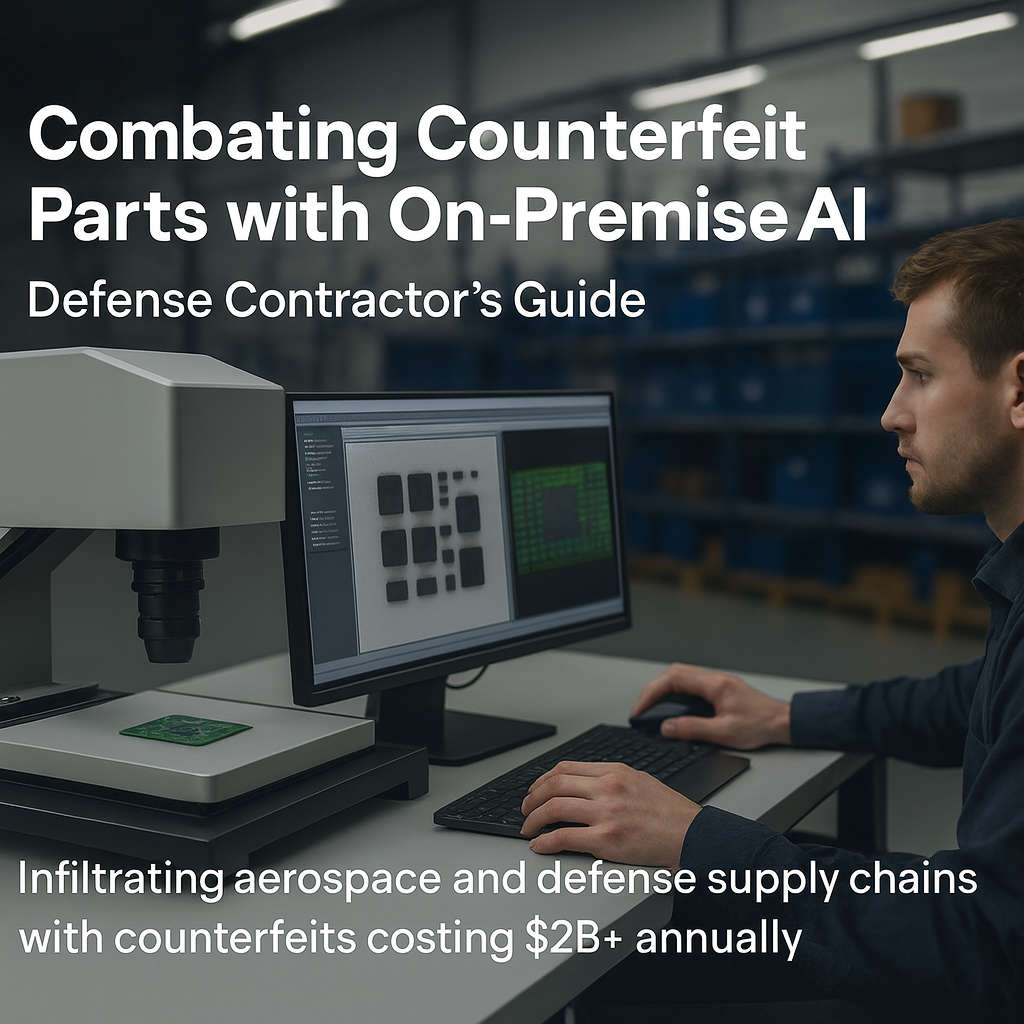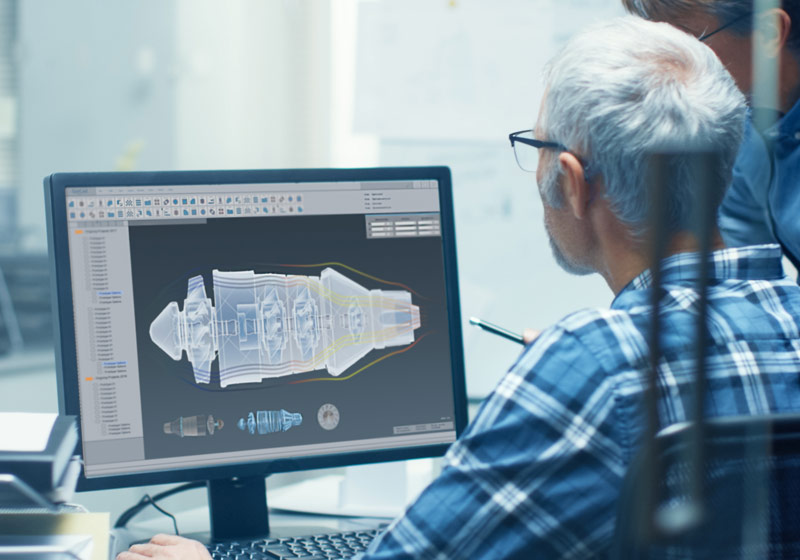The $2B Counterfeit Problem
In 2023, a counterfeit component entered the F-35 Lightning II program and triggered a $47 million grounding. It wasn’t an isolated incident. The aerospace and defense industry loses over $2 billion every year to counterfeit parts.
The Aviation Supply Chain Integrity Coalition (ASCIC) estimates that traditional inspections catch only 65% of advanced counterfeits, leaving critical systems exposed. When defense contractors depend on global supply networks and increasingly complex electronics, even one failure can cascade into delays, penalties, or worse—compromised national security.
Executive Summary
On-premise AI systems deliver 99.2% counterfeit detection accuracy with complete data sovereignty
3.4x ROI within 18 months by cutting inspection costs and avoiding failures
Seamless compliance with AS5553, SAE AS6174, DFARS 252.246-7007
Real-time analysis reduces inspection from 72 hours to 15 minutes per batch
Why Traditional Methods Fall Short
Visual inspections and manual electrical testing can’t keep pace with counterfeit sophistication. Many parts arrive in authentic packaging with laser-etched codes and pass first-round performance tests—yet contain embedded vulnerabilities that only trigger after thousands of operational hours.
Example: In 2022, Raytheon uncovered counterfeit memory modules inside Honeywell-labeled packaging for AESA radar systems. These parts slipped through three distributors over 14 months and cost $23 million in program delays.
The Compliance Landscape
Defense contractors are legally required to combat counterfeit infiltration:
AS5553 mandates supplier traceability, chain of custody documentation, and rigorous inspection
SAE AS6174 defines standardized test methods: from X-ray imaging to temperature cycling
DFARS 252.246-7007 requires contractors to actively detect, report, and remediate counterfeit parts
On-premise AI systems directly support these mandates by automating documentation, standardizing inspections, and generating audit-ready trails without human bottlenecks.
Why On-Premise AI Is the Strategic Choice
Cloud AI can be effective, but defense environments demand data sovereignty, ITAR compliance, and security independence. On-premise systems deliver advanced analysis while keeping sensitive supply chain data fully in-house.
How It Works
Computer Vision AI: trained on 2.3M authentic parts to spot anomalies at micron precision
Spectral Analysis: X-ray, infrared, and terahertz imaging for internal structure verification
Electrical Signature Matching: benchmarked against OEM baselines
Package Authentication: font, surface, and marking verification beyond human capability
Supply Chain Correlation: linking procurement data to known counterfeit networks
Performance at a Glance:
Visual inspection only: 32% accuracy / 45 minutes per part
Traditional testing: 65% accuracy / 72 hours per batch
On-premise AI: 99.2% accuracy / 15 minutes per batch
Case Study: Lockheed Martin’s HIMARS Line
Before AI:
58% detection rate
96 hours inspection cycle
$156 cost per part
12% false positives
After Netray AI:
99.7% detection rate
18 minutes per batch
$14.80 cost per part
0.3% false positives
3.8x ROI in 16 months
Industry Alignment: ASCIC Framework
The ASCIC calls for four pillars in counterfeit prevention:
Transparency: Traceability through automated documentation
Advanced Detection: AI that continuously adapts to new counterfeit variants
Information Sharing: Secure intelligence exchange between coalition members
Standards Compliance: Automated validation against AS5553 and AS6174
On-premise AI aligns with all four, giving contractors a compliant and future-proof path forward.
ROI and Payback
For a 10,000-part workload, on-premise AI cuts inspection labor by $167K, false positives by $144K, and quality escapes by $867K annually. Across 23 defense contractor deployments, payback typically occurs in 14–20 months.
Implementation Roadmap
Assessment: Evaluate volume, facility requirements, training, and compliance needs
Deployment: Install AI hardware/software, calibrate with authentic parts, integrate with ERP/QMS
Validation: Run AI in parallel with traditional testing, refine thresholds
Transition: Move to full production, certify operators, monitor KPIs
Continuous Improvement: AI algorithms evolve with every new counterfeit signature
Looking Ahead
Next-gen AI systems are already incorporating:
Quantum imaging for atomic-level analysis
Blockchain provenance for immutable component records
Predictive analytics to flag high-risk suppliers before infiltration
Real-time intelligence networks for shared counterfeit signatures
By 2025, Netray’s roadmap projects 99.95% detection accuracy in under 30 seconds per part.
Conclusion: The Imperative for Action
Counterfeit parts are no longer just a nuisance—they are a $2B+ security threat. Traditional methods cannot keep pace, and regulators are making advanced detection mandatory.
Defense contractors who invest in on-premise AI today will:
Eliminate counterfeit infiltration risk
Reduce inspection time and cost
Strengthen compliance and audit readiness
Secure competitive advantage in defense supply chains
The choice is clear: lead the transition to AI-powered counterfeit detection, or be forced to catch up as requirements harden.
👉 Schedule a technical assessment with Netray
👉 Download our ROI calculator and implementation guide



